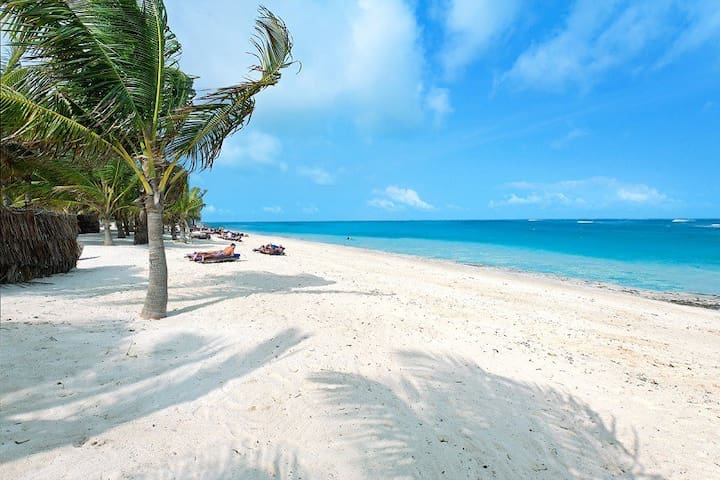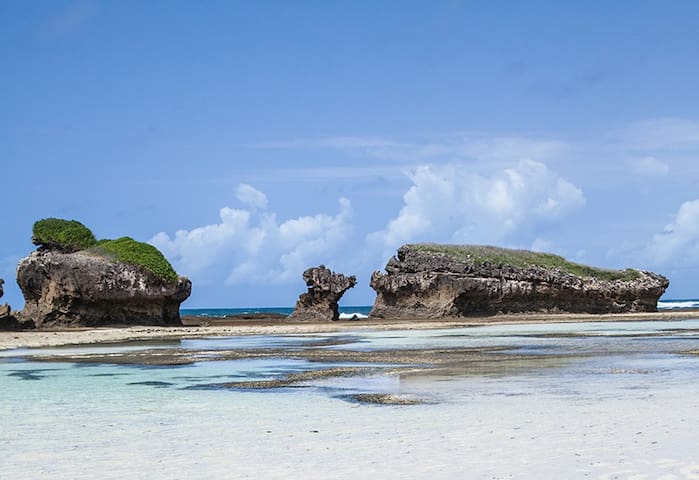Sightseeing
Vasco da Gamma is one of the most memorable places to visit while in Malindi.
Malindi has existed since at least the 13th century.
The resort town is best known for the Vasco da Gama Pillar, a bell-shaped monument built by the Portuguese in 1498.
This monument is one of the oldest European cenotaphs built on the East African coast in 1498 amid Muslim resistance. It was built by the Portuguese to give direction for those following the sea route to India.
Da Gama was a Portuguese explorer and navigator, the first person to sail directly from Europe to India.
His discovery of the sea route to India made it possible for the Portuguese to establish a long-running colonial empire in Asia.
44 personas locales recomiendan
Vasco da Gama Pillar
Vasco da Gamma is one of the most memorable places to visit while in Malindi.
Malindi has existed since at least the 13th century.
The resort town is best known for the Vasco da Gama Pillar, a bell-shaped monument built by the Portuguese in 1498.
This monument is one of the oldest European cenotaphs built on the East African coast in 1498 amid Muslim resistance. It was built by the Portuguese to give direction for those following the sea route to India.
Da Gama was a Portuguese explorer and navigator, the first person to sail directly from Europe to India.
His discovery of the sea route to India made it possible for the Portuguese to establish a long-running colonial empire in Asia.
Part of the Malindi Historic Circuit, this moderately interesting museum has some displays on underwater arachaeology along the Kenyan coast.
16 personas locales recomiendan
Malindi Museum
Part of the Malindi Historic Circuit, this moderately interesting museum has some displays on underwater arachaeology along the Kenyan coast.
Malindi Marine National Park is located in the Indian Ocean, off the coast of Kenya. It is claimed to be oldest marine park in Africa. The park lies at Malindi, about 118 km north of Mombasa and is protected and administered by the Kenya Wildlife Service. Along with Watamu Marine National Park, Malindi Marine Park is enclosed by the Malindi Marine National Reserve.
29 personas locales recomiendan
Marine Park
Casuarina RoadMalindi Marine National Park is located in the Indian Ocean, off the coast of Kenya. It is claimed to be oldest marine park in Africa. The park lies at Malindi, about 118 km north of Mombasa and is protected and administered by the Kenya Wildlife Service. Along with Watamu Marine National Park, Malindi Marine Park is enclosed by the Malindi Marine National Reserve.
Gede ruins are the remains of a Swahili town, typical of most towns along the East African Coast. It traces its origin in the twelfth century but was rebuilt with new town walls in the fifteenth and sixteenth centuries. This rebuilding is connected with the emigration of many citizens of Kilwa to Mombasa, Malindi and other places along the coast.
With its numerous inhabitants, the town became wealthy and it reached its peak in the fifteenth century. This enormous wealth is evidenced by the presence of numerous ruins, comprising of a conglomeration of mosques; a magnificent palace and houses all nestled in 45 acres ofprimeval forest. But in the first half of the seventeenth century the last
families left the town.
Gede’s eventual abandonment to nature is believed to be as a result of a number of factors. Namely, the Wazimba raid along the East African coast in 1589. The removal of the Sheikh of Malindi and the Portuguese to Mombasa in 1593. The falling water table as shown by the deepening of the well outside the Great Mosque and finally the overhanging menace of the Galla, a hostile nomadic ethnic group from Somalia. Gede remains the first intensively studied site on the coast. It was first visited by Sir John Kirk, a British resident of Zanzibar in 1884.
38 personas locales recomiendan
Gede Ruins
Gede ruins are the remains of a Swahili town, typical of most towns along the East African Coast. It traces its origin in the twelfth century but was rebuilt with new town walls in the fifteenth and sixteenth centuries. This rebuilding is connected with the emigration of many citizens of Kilwa to Mombasa, Malindi and other places along the coast.
With its numerous inhabitants, the town became wealthy and it reached its peak in the fifteenth century. This enormous wealth is evidenced by the presence of numerous ruins, comprising of a conglomeration of mosques; a magnificent palace and houses all nestled in 45 acres ofprimeval forest. But in the first half of the seventeenth century the last
families left the town.
Gede’s eventual abandonment to nature is believed to be as a result of a number of factors. Namely, the Wazimba raid along the East African coast in 1589. The removal of the Sheikh of Malindi and the Portuguese to Mombasa in 1593. The falling water table as shown by the deepening of the well outside the Great Mosque and finally the overhanging menace of the Galla, a hostile nomadic ethnic group from Somalia. Gede remains the first intensively studied site on the coast. It was first visited by Sir John Kirk, a British resident of Zanzibar in 1884.
Marafa Depression is known as Hell's Kitchen due to the high temperatures that can go up to 50 degrees in the afternoons. Enjoy an early walk under and through the rocky outcrops.
The canyon is as a result of the crumbly sandstone rocks that have eroded faster than the harder, taller rocks. There are three distinct colours contained in the rock; red for iron, yellow for orchre and white for chalk.
During your visit to Marafa - Hell's Kitchen, your guide will tell you of the legend that is told locally of how the canyon came to form.
19 personas locales recomiendan
Hells Kitchen
Marafa Depression is known as Hell's Kitchen due to the high temperatures that can go up to 50 degrees in the afternoons. Enjoy an early walk under and through the rocky outcrops.
The canyon is as a result of the crumbly sandstone rocks that have eroded faster than the harder, taller rocks. There are three distinct colours contained in the rock; red for iron, yellow for orchre and white for chalk.
During your visit to Marafa - Hell's Kitchen, your guide will tell you of the legend that is told locally of how the canyon came to form.
Kipepeo Butterfly Project
Parque Nacional Marino de Watamu
Food scene
Bar Bar Restaurant & Pizzeria
Lamu RoadBlanco Restaurant - Ristorante - Bar - Pizzeria - Spiaggia
Silversand RoadBaby Marrow
Silversand RoadThe Old Man & The Sea
Silversand RoadOsteria Beach Restaurant
80200 Casuarina RoadKaren Blixen - Malindi
Bar & Club
Star Dust
Fermento Disco Bar


